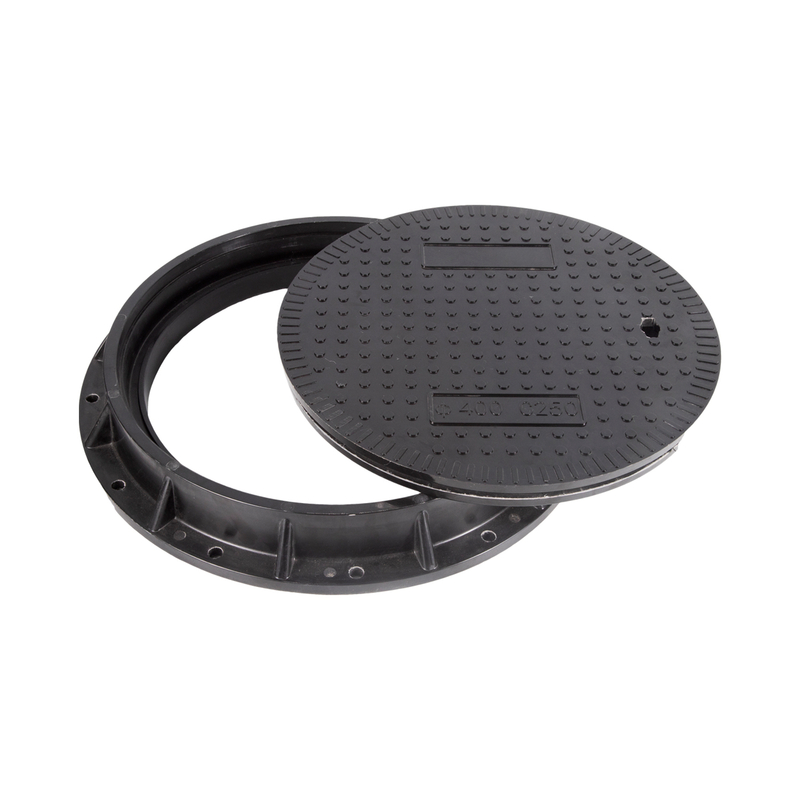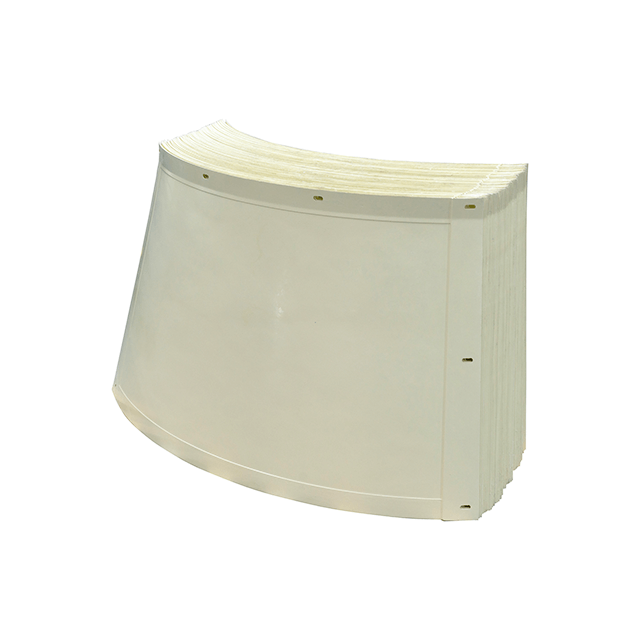Views: 0 Author: Site Editor Publish Time: 2025-10-18 Origin: Site









Compression molding is a versatile manufacturing process that shapes materials by applying heat and pressure within a mold. This method is particularly effective for thermosetting plastics, rubber, and composite materials, making it a popular choice across various industries, including automotive, medical, and consumer goods. By understanding the step-by-step process, the equipment involved, and the key factors that influence the outcome, manufacturers can harness the full potential of compression molding to produce high-quality, durable parts tailored to specific applications.
Compression molding shapes materials by applying heat and pressure inside a mold. This method works well for thermosetting plastics, rubber, and composites. Here’s a detailed look at how it unfolds, the tools used, and the key factors that influence the process.
1. Mold PreparationThe mold, usually made from steel or aluminum, is cleaned and preheated. Heating helps soften the material and prevents defects during molding. A release agent may be applied to ease part removal later.
2. Charge LoadingThe raw material—called the charge—is measured and placed into the mold cavity. It can be a preheated mass, granules, or a sheet depending on the material type and product design.
3. Mold Closing and CompressionThe mold halves close, and pressure is applied. The heat and pressure force the material to fill the cavity, taking the mold’s shape. This step also initiates curing for thermosetting materials, turning them from soft to solid.
4. Curing and CoolingThe material cures inside the mold under maintained heat and pressure for a set time. After curing, the mold cools to solidify the part and prepare it for ejection.
5. Ejection and FinishingThe mold opens, and the part is removed. Excess material, called flash, is trimmed off to finalize the product.
● Compression Molding Press A hydraulic press applies the necessary force, ranging from 150 to 2,500 tons depending on part size and material.
● MoldsPrecision-engineered molds have two halves—upper and lower—with a cavity shaped like the final product. They are made to withstand heat and pressure over many cycles.
● Heating ElementsElectrical heaters or ovens heat the molds and material. Proper temperature control is crucial for consistent quality.
● Air SystemsCompressed air cleans the mold cavity and removes debris during the process.
● Cutting ToolsUsed to remove flash and finish the molded parts.
● TemperatureControls material flow and curing speed. Too low, and the material won’t fill the mold properly; too high, and it may degrade or warp.
● PressureEnsures the material fills every part of the mold and compacts correctly. Higher pressure is needed for dense or fiber-reinforced materials.
● TimeThe duration of heat and pressure application affects curing and final part strength. It varies by material and part thickness, typically lasting from 1 to 5 minutes.
Balancing these parameters is critical. For example, thicker parts require longer curing and sometimes higher pressure to ensure complete formation. Temperature must be carefully controlled to avoid defects like warping or incomplete curing.
Always calibrate temperature, pressure, and curing time based on material type and part thickness to maximize product quality and reduce defects in compression molding.

Compression molding uses different mold types to shape materials under heat and pressure. Choosing the right mold depends on the product design, material, and production needs. Let’s explore the three main types of compression molds: Open Flash Type, Positive Type, and Semi-Positive Type.
This mold type allows excess material to escape during compression. The mold halves don’t seal tightly, creating a small gap where extra material, called flash, squeezes out. Though this leads to some material waste, it helps prevent defects like air bubbles and ensures the molded part fills the cavity completely.
Open flash molds are common in rubber molding for products needing consistent thickness and surface quality, such as gaskets and seals. They’re simpler and less costly to make, making them ideal for high-volume production where some flash trimming is acceptable.
Positive molds seal tightly, leaving no gap between the mold halves. This means no flash forms, minimizing material waste. However, this mold requires very precise measurement of the charge (the raw material) to fill the cavity exactly.
The tight seal offers excellent control over part density and mechanical strength, producing high-quality parts with smooth surfaces. The downside is a higher risk of trapped air, which can cause surface blemishes like blistering. Positive molds are best for parts where material cost is high or flash removal is difficult.
This mold type strikes a balance between open flash and positive molds. It allows a small amount of flash to escape, reducing the need for exact charge measurement while controlling material waste better than open flash molds.
Semi-positive molds provide good dimensional control and surface finish. They are more expensive than open flash molds but offer greater flexibility and efficiency, making them suitable for medium-volume production and more complex shapes.
Mold Type | Flash Formation | Charge Measurement | Material Waste | Surface Quality | Typical Use Cases |
Open Flash | Yes | Less precise | Higher | Good | Gaskets, seals, simple parts |
Positive | No | Very precise | Minimal | Excellent | High-value parts, no flash allowed |
Semi-Positive | Small amount | Moderate | Moderate | Very good | Medium complexity parts |
Selecting the proper mold type impacts product quality, material use, and production cost, so evaluate your project’s requirements carefully before deciding.
Compression molding works with a variety of materials, each bringing unique properties to the final product. Understanding these materials helps manufacturers choose the right one for their specific needs, whether it’s strength, flexibility, heat resistance, or cost-effectiveness.
Thermosets are plastics that harden permanently when heated and molded. Once set, they can’t be melted again. This makes them ideal for parts needing high heat resistance and structural stability. They’re often combined with fibers like carbon or glass to create strong composites.
Common thermosetting materials include:
● Phenolic Molding Compounds: Known for excellent heat resistance and stability, often used in electrical components and automotive parts.
● Epoxy Resins: Strong and durable, frequently reinforced with fibers for aerospace and industrial applications.
● Polyester: Can act as a thermoset when cured, used in fiberglass composites.
● Polyurethane: Offers toughness and flexibility, suitable for seals and gaskets.
Thermosets provide great mechanical strength and resistance to chemicals and heat, but they aren’t recyclable once cured.
Thermoplastics soften when heated and harden upon cooling, allowing them to be reshaped multiple times. This recyclability makes them more environmentally friendly than thermosets. They’re often used for parts needing toughness and impact resistance.
Popular thermoplastics in compression molding include:
● Nylon: Strong, wear-resistant, and low friction, ideal for automotive and industrial parts.
● High-Density Polyethylene (HDPE): Chemical-resistant and tough, used in containers and piping.
● Polypropylene: Lightweight and versatile, often foamed in compression molding for cushioning applications.
● Polytetrafluoroethylene (PTFE): Known for non-stick properties and chemical resistance, used in seals and electrical insulation.
Thermoplastics can be molded repeatedly, which helps reduce waste and cost.
Composites combine a polymer matrix with reinforcing fibers to create parts that are lightweight yet very strong. Compression molding excels at shaping these materials into complex, high-performance products.
● Glass Fiber Reinforced Composites: Commonly used in automotive body panels and industrial equipment. They offer good strength and corrosion resistance at a reasonable cost.
● Carbon Fiber Composites: Provide superior stiffness and strength, often found in aerospace, sports equipment, and high-end automotive parts. Carbon fiber is more expensive but offers unmatched performance.
● Sheet Molding Compound (SMC): A prepreg composite sheet with resin and glass fiber, easy to mold into large parts.
● Bulk Molding Compound (BMC): A dough-like mix of resin and chopped fibers, good for smaller, detailed parts.
These composites improve the mechanical properties of molded parts while keeping weight low.
When selecting materials for compression molding, consider the balance between strength, heat resistance, recyclability, and cost to match your product’s performance and sustainability goals.
Compression molding is a versatile process used across many industries because it handles a wide range of materials and produces durable, high-quality parts. Its ability to create consistent, strong components makes it a popular choice for manufacturing in sectors such as automotive, medical, and consumer electronics.
Compression molding plays a key role in making various automotive parts. It’s ideal for producing components that need to be strong and heat-resistant, such as:
● Door panels
● Engine covers
● Bumper parts
● Electrical insulators
● Chassis components
The process works well for thick-walled parts that require durability and excellent mechanical properties. It also supports composite materials like carbon fiber and fiberglass, which help reduce vehicle weight while maintaining strength. This makes compression molding a go-to method for manufacturers aiming to improve fuel efficiency and performance.
In the medical and dental fields, compression molding is used to create precise, reliable parts such as:
● Syringe stoppers
● Respirator mask components
● Orthopedic inserts
● Dental devices
Materials like silicone and specialized thermosetting polymers provide excellent biocompatibility and flexibility, which are essential for patient safety and comfort. The process allows for tight tolerances and consistent quality, crucial for medical applications where precision matters.
Compression molding is also common in consumer products and electronics, producing items like:
● Kitchenware (e.g., heat-resistant bowls and utensils)
● Phone cases and protective covers
● Video game controllers and keypads
● Electrical housings and connectors
The process enables manufacturers to produce parts with smooth finishes and complex shapes, often combining materials for added functionality. For example, silicone rubber parts provide grip and shock absorption in electronic devices, while thermoplastics offer rigidity and durability.
When selecting compression molding for your application, consider the material’s compatibility with the product’s function and environment to ensure optimal performance and longevity.
Compression molding offers several key benefits, making it a popular choice for many manufacturers. However, it also comes with some limitations. Understanding both sides helps you decide if this process fits your product needs.
● Lower Tooling and Material CostsCompression molding typically requires less expensive molds compared to injection molding. The process also wastes less material since the charge is carefully measured, which saves money—especially when using costly composites or thermosets.
● Strong, Durable PartsThe high pressure and heat produce parts with excellent mechanical properties. Compression molding works well for thick, robust components that need to withstand wear, heat, or chemical exposure.
● Wide Material CompatibilityIt handles a broad range of materials, including thermosetting plastics, rubber, and fiber-reinforced composites. This versatility lets manufacturers tailor parts for specific strength, flexibility, or heat resistance requirements.
● Good Surface Finish and Dimensional AccuracyParts often come out with smooth surfaces and consistent dimensions, reducing the need for extensive post-processing.
● Design Flexibility for Simple to Moderate GeometriesMolds can be customized to create various shapes, including inserts or overmolded features. This flexibility supports many industries, from automotive to medical devices.
● Batch Production CapabilitiesCompression molding suits small to medium production runs well, allowing for efficient cycle times and repeatable quality.
● Limitations on Intricate or Thin-Walled PartsCompression molding struggles to produce highly detailed shapes or thin walls. The process relies on pressure to force material into the mold, which becomes difficult with complex features or delicate sections.
● Slower Cycle Times Compared to Injection MoldingThe curing and cooling stages can take several minutes, making compression molding less ideal for very high-volume production when speed is critical.
● Flash Formation and Material WasteExcess material often squeezes out at mold parting lines, creating flash. Removing this flash adds time and cost, and if not managed well, can affect part quality.
● Pressure Range LimitationsThe maximum pressure in compression molding presses is lower than injection molding machines, restricting the ability to mold very dense or highly detailed parts.
● Ejection Difficulties for Complex ShapesParts with undercuts or complex geometries can be hard to remove from the mold, risking damage or requiring specialized mold designs.
When considering compression molding, weigh its cost savings and material options against the complexity and volume of your parts to ensure the best fit for your manufacturing goals.
When choosing a molding process, it’s important to understand how compression molding compares to others like injection molding, transfer molding, and blow molding. Each method has its strengths and weaknesses, making them better suited for certain applications and materials.
Injection molding injects molten material into a closed mold under high pressure. It excels at producing highly detailed, thin-walled, and complex parts quickly and in large volumes. The process uses thermoplastics primarily, allowing for rapid cooling and fast cycle times.
Compression molding, on the other hand, applies heat and pressure to shape materials inside an open mold. It’s better for thicker, more robust parts, especially those made from thermosetting plastics or fiber-reinforced composites. While compression molding cycles are slower due to curing times, it offers cost savings on tooling and material waste, especially for high-strength or heat-resistant parts.
Key differences include:
● Detail and Complexity: Injection molding handles intricate features better. Compression molding struggles with thin walls and fine details.
● Material Types: Injection molding favors thermoplastics. Compression molding suits thermosets, rubbers, and composites.
● Production Speed: Injection molding is faster, ideal for high-volume runs. Compression molding is slower but efficient for medium volumes.
● Cost: Compression molding usually has lower tooling costs and less material waste, especially for expensive compounds.
Transfer molding is a variation of compression molding. It involves preheating the material in a chamber, then forcing it into the mold under pressure. This method improves flow and allows more complex shapes than compression molding. Transfer molding is commonly used for encapsulating electronics or making detailed rubber parts.
Blow molding creates hollow, thin-walled products by inflating heated plastic inside a mold. It’s perfect for bottles, containers, and ducts but not suitable for solid or thick parts.
Compared to these:
● Compression molding is more suited for solid, thick, and fiber-reinforced parts.
● Transfer molding offers better control for complex shapes but at higher equipment costs.
● Blow molding is specialized for hollow shapes and doesn’t compete directly with compression molding for solid parts.
Choose compression molding for strong, thick parts made from thermosets or composites, injection molding for detailed thermoplastic parts, and transfer or blow molding when your design requires complex shapes or hollow structures.

Compression molding is evolving quickly, driven by new technology and a growing focus on sustainability. These trends are shaping the future of this manufacturing process, making it more efficient, eco-friendly, and adaptable to modern industry needs.
Automation and smart manufacturing are transforming compression molding. Modern presses now often come with digital controls that monitor temperature, pressure, and curing time in real time. This data helps optimize cycles, reduce defects, and improve repeatability. Machine learning algorithms can analyze process data to predict maintenance needs and adjust parameters for better quality.
Robotics integration is also on the rise, especially for part handling and flash removal. Automated systems speed up production and reduce manual labor, increasing safety and consistency.
Advanced materials science is expanding the range of usable materials. New composite formulations, such as carbon fiber reinforced thermoplastics and bio-based resins, allow for lighter, stronger parts. Innovations in mold design, including conformal cooling channels created by 3D printing, help reduce cycle times and improve part quality.
Hybrid molding methods, like injection-compression molding, combine benefits of both processes. These hybrids enable production of complex, thin-walled parts with excellent surface finish and dimensional accuracy.
Sustainability is becoming a top priority in manufacturing. Compression molding aligns well with this trend because it generates less material waste compared to other methods. Still, manufacturers are pushing further by using recycled materials and bio-based polymers.
Developments in recyclable thermosets and thermoplastics help reduce environmental impact. For example, new chemically recyclable thermoset resins allow parts to be broken down and reused, extending material life cycles.
Energy-efficient presses and heating systems also contribute to greener production. Some facilities now use renewable energy sources to power molding machines, cutting carbon footprints.
Manufacturers increasingly seek certifications and compliance with environmental standards, such as ISO 14001, to demonstrate commitment to sustainable practices.
Embrace digital controls and automation in compression molding to boost efficiency and quality while exploring eco-friendly materials to meet sustainability goals.
Compression molding shapes materials using heat and pressure, ideal for thermosetting plastics, rubber, and composites. The process balances temperature, pressure, and time to produce durable parts. Future trends include automation, eco-friendly materials, and hybrid molding methods. About Jianan - Your Trusted Fiberglass Manufacturer offers innovative solutions, providing high-quality, sustainable molded products that meet diverse industry needs. Their expertise in advanced materials and technology ensures reliable, efficient manufacturing, delivering exceptional value to customers.
A: Compression molding is a process that shapes materials using heat and pressure inside a mold, ideal for thermosetting plastics, rubber, and composites.
A: Carbon fiber compression molding creates lightweight, strong parts by combining carbon fibers with a polymer matrix, often used in aerospace and automotive industries.
A: Fiberglass compression molding offers good strength and corrosion resistance at a reasonable cost, suitable for automotive and industrial applications.
+86 13913647707 / 13915651436


